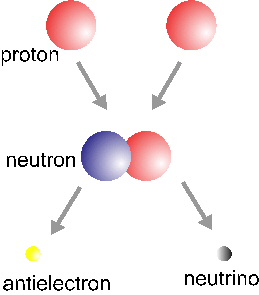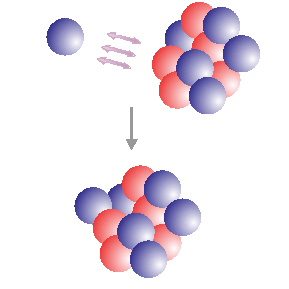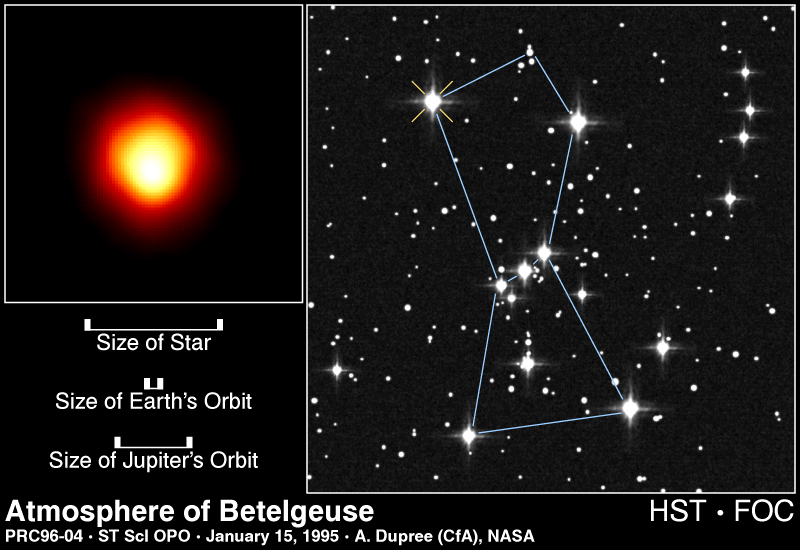The red giant star Betelgeuse: red giants are stars that have exhausted
their Hydrogen fuel and are burning Helium and heavier elements.
Click on image for full size
Image courtesy of NASA, Hubble Space Telescope Institute
Creating Elements up to Iron
When the temperature in the core of a star is really hot (100 million degrees Kelvin!) fusion
of Helium into Carbon happens. Oxygen is also formed when the temperature is this high.
When it gets even hotter in the core of the star other elements can be formed. These elements are Neon, Sodium, Magnesium, Sulfur, Silicon, Nickel, Cobalt and Iron. Have you ever heard of any of these elements? (hint: Sodium is found is something you eat...).
Movies courtesy of University of Oregon
You might also be interested in:

Fusion in the core of stars is reached when the density and temperature are high enough. There are different fusion cycles that happen in different phases of the life of a star. These different cycles
...more
In the basic Hydrogen fusion cycle, four Hydrogen nuclei come together to make a Helium nucleus. This is the simple version of the story. There are actually electrons, neutrinos and photons involved in
...more
Neutron capture can occur when a neutron approaches a nucleus close enough for nuclear forces to be effective. The neutron is captured and forms a heavier isotope of the capturing element. When the new
...more
A Supernova is a very massive star that explodes at the end of its life. The supernova is where the heavy elements (heavier than iron) are made.
...more
The Sun acts like it has a big magnet in the middle of it. We call this the Sun's magnetic field. The Sun's magnetic field has a fancier name, the Interplanetary Magnetic Field (IMF). This just means that
...more
The center of an atom is called the nucleus. Nuclei is the plural of nucleus. When two atoms come together, and their nuclei combine, you have fusion. Fusion releases energy. By using Einstein's famous
...more
The theory of relativity states that no particle can travel at the speed of light in a vacuum. However, light travels at lower speeds in dense media, like water. A particle traveling in water must have
...more
Neutrino interactions with matter are extremely rare, so detecting a neutrino is very hard. Neutrino detectors are typically large, underground tanks filled with a fluid that reacts to neutrinos. In neutrino
...more















